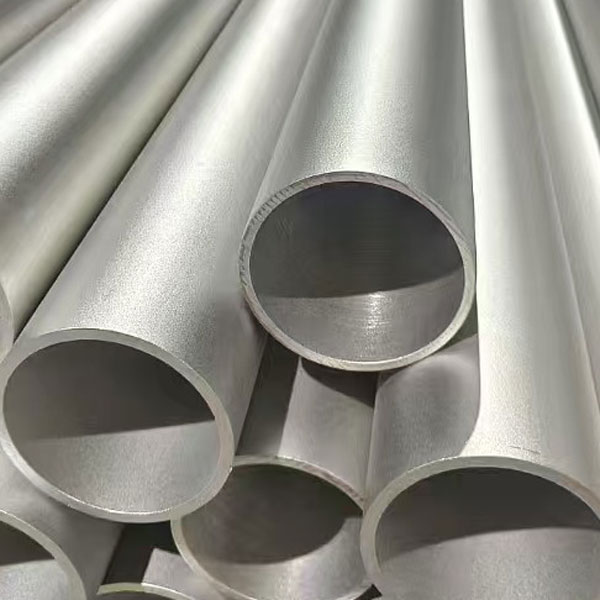Stainless Steel Pipe Surface Treatment: Sandblasting, Pickling, and Seamless Conversion
The performance and appearance of stainless steel pipes rely heavily on proper stainless steel pipe surface treatment. Among the most widely used methods are sandblasting, pickling, and seamless conversion. Each process not only improves the pipe’s durability and corrosion resistance but also enhances its surface quality for demanding industrial applications.
At Ganyeah Group, we combine advanced production technology with specialized stainless steel pipe surface treatment solutions to deliver pipes that meet the highest standards of performance, safety, and aesthetics.

Stainless steel pipe surface treatment with sandblasting
1. Sandblasting: Physical Surface Cleaning
Process:
Sandblasting uses high-speed abrasive particles (such as quartz sand, alumina, or steel shot) propelled by compressed air to strike the pipe surface. This removes oxide scale, rust, and impurities while creating a rough, matte surface with a surface roughness of Ra 1.6–6.3 μm.
Key Effects:
- Effective cleaning of oxide layers, welding residues, and rust.
- Creates a uniform rough texture, improving adhesion of coatings or paints.
- Provides a matte appearance that resists fingerprints and scratches.
Applications:
- Decorative matte pipes for railings, façades, or equipment housings.
- Pre-treatment before applying protective coatings.
- Surface repair to remove minor defects.
Limitations:
- Only affects surface appearance, not structural integrity.
- Generates dust and requires proper cleaning and environmental controls.
2. Pickling: Chemical Surface Refinement
Process:
Pickling immerses stainless steel pipes in acid solutions (such as nitric, sulfuric, or mixed acids) to dissolve oxides, rust, and welding slag. This process not only cleans the surface but also enriches chromium content, initiating a passive film for better corrosion resistance.
Key Effects:
- Removes deep oxide layers and welding residues that sandblasting cannot reach.
- Restores uniform color and surface smoothness (Ra 0.8–3.2 μm).
- Prepares the surface for passivation, enhancing corrosion resistance.
Applications:
- Post-welding cleaning of stainless steel welded pipes.
- Surface treatment after heat processing.
- Precision industries such as food and pharmaceutical pipelines.
Limitations:
- Improper control may lead to over-pickling and surface pitting.
- Requires strict acid waste management to meet environmental standards.
- Does not repair deep scratches or mechanical damage.
3. Seamless Conversion Treatment: Structural Optimization of Welded Pipes
Process:
Unlike sandblasting and pickling, seamless conversion is a structural enhancement process for welded stainless steel pipes. It removes internal weld beads, applies localized heat treatment to eliminate stress, and polishes or pickles the weld area. The result is a smoother interior surface and pressure performance closer to seamless pipes.
Key Effects:
- Increases pressure resistance by eliminating weld defects.
- Improves internal smoothness, reducing flow resistance in fluid transport.
- Provides a cost-effective alternative to seamless pipes for medium-demand applications.
Applications:
- Medium- to low-pressure pipelines for water, gas, and air.
- Structural components where moderate strength and lower cost are preferred.
- Decorative welded pipes requiring smooth inner surfaces.
Limitations:
- Does not achieve the full strength of original seamless pipes.
- More complex and costly than standard welded pipes.
4. Comparison Table
| Feature | Sandblasting | Pickling | Seamless Conversion |
|---|---|---|---|
| Process Type | Physical surface treatment | Chemical surface treatment | Structural optimization |
| Principle | Abrasive particle impact | Acid dissolution of oxides | Weld bead removal + heat treatment |
| Target | Mainly external surfaces | Internal & external surfaces | Weld seams of stainless pipes |
| Surface Roughness | Ra 1.6–6.3 μm (rough matte) | Ra 0.8–3.2 μm (smooth, clean) | Lowered, smooth internal surface |
| Core Benefit | Adhesion strength, matte finish | Clean, uniform, pre-passivated | Pressure strength, smooth flow |
| Pipe Types | Seamless & welded pipes | Seamless & welded pipes | Welded pipes only |
| Cost | Medium | Medium | Higher than welded, lower than seamless |
5. Choosing the Right Process with Ganyeah Group
- For decorative matte finishes and coating preparation: Choose sandblasting.
- For deep cleaning and improved corrosion resistance: Pickling is the best option.
- For upgrading welded pipes to near-seamless performance: Seamless conversion delivers excellent value.
At Ganyeah Group, we not only manufacture stainless steel pipes but also provide professional finishing and processing services. Our expertise ensures you receive pipes that meet both performance and budget requirements for industries ranging from construction to chemical processing.
